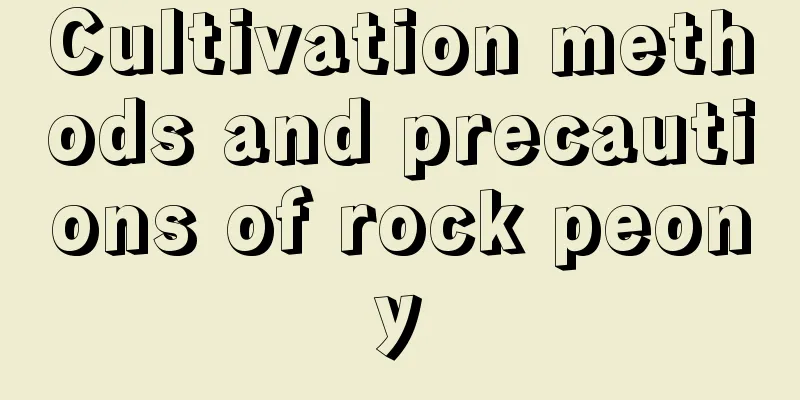Cultivation methods and precautions of rock peony

How to grow rock peonyPot soil selectionRock peony prefers sandy soil with good drainage and requires a deep soil layer to facilitate root growth. The ideal soil is heavy clay mixed with coarse sand, and some humus can be added. You can choose plastic pots, which are conducive to the growth of the roots of rock peonies and provide a warmer growing environment for the roots of rock peonies. Light and temperatureRock peony prefers a growing environment with sufficient light and air circulation, and the temperature can be kept between 0℃ and 30℃. During the maintenance process, it is necessary to ensure that the rock peony has sufficient light. If it is summer with strong light, timely shade is needed. The temperature needs to be controlled within a reasonable range. In winter, we prefer a cooler climate and the temperature does not need to be too high, but sometimes we also need to take insulation measures. It is recommended to keep the temperature above 10°C. Watering and fertilizingWatering needs to be carried out according to climate conditions and the growth conditions of the plants. Basically, during the growth period of rock peony, the soil needs to be kept moist and free of water accumulation, while the soil needs to be kept dry during the dormant period in winter. Fertilization can be combined with watering. When fertilizing, you can apply some dilute fertilizer water, mainly phosphorus and potassium fertilizers. Things to note when growing rock peonyReproductionRock peony is relatively easy to propagate. It can be sown, cuttaged or grafted. Grafting requires the selection of a suitable rootstock. Pests and diseasesThe disease and pest control of rock peony mainly focuses on prevention. When watering, put self-priming insecticide in the water. Prevention and control can be carried out twice a year. If diseases and pests occur, alcohol lamp solution can be used immediately for prevention and control. |
<<: Sweet potato hydroponic culture tutorial is here, eating it is better than eating ginseng
>>: Heather cultivation methods and precautions
Recommend
What is the difference between windproof and nepeta?
1. Leaf Difference The leaves of Saposhnikovia ha...
Is the dragon blood tree poisonous?
1. Is it toxic? The first thing to note is that i...
How can a novice grow hydrangea seedlings well (how to grow hydrangeas well at home)
How to grow hydrangeas well After we buy hydrange...
Feng Shui Effects of Banyan Bonsai
Feng Shui Banyan trees are beautiful and elegant....
Breeding techniques for North American alligator turtles
The North American alligator snapping turtle is a...
What are the varieties of hibiscus?
White flower hibiscus The white-flowered double-p...
Is the Cream Lonza rose a vine or a shrub? How to grow it?
1. Is the Cream Lonza rose a vine or a shrub? Cre...
Can Clivia be planted in the ground?
Can Clivia be planted in the ground? Clivia can b...
If gardenia drinks some magic water, it will immediately turn green and ooze oil, and it will grow wildly and cannot be stopped!
Overwatering causes yellowing leaves The end of t...
What is the best month to plant broad beans?
When to plant broad beans Broad beans are general...
Characteristics of orchids, how to grow orchids
1. Characteristics of orchids Orchid is an epiphy...
How to make Yacon sprout quickly
Yacon germination environment After the yacon is ...
How often should I fertilize the lucky tree and what kind of fertilizer should I use?
How often should I fertilize the lucky tree? The ...
How to grow Christmas cactus
1. Breeding methods: 1. Soil It is best to use br...
Cultivation method of summer hyacinth
1. Soil Summer hyacinth prefers loose, fertile, w...









